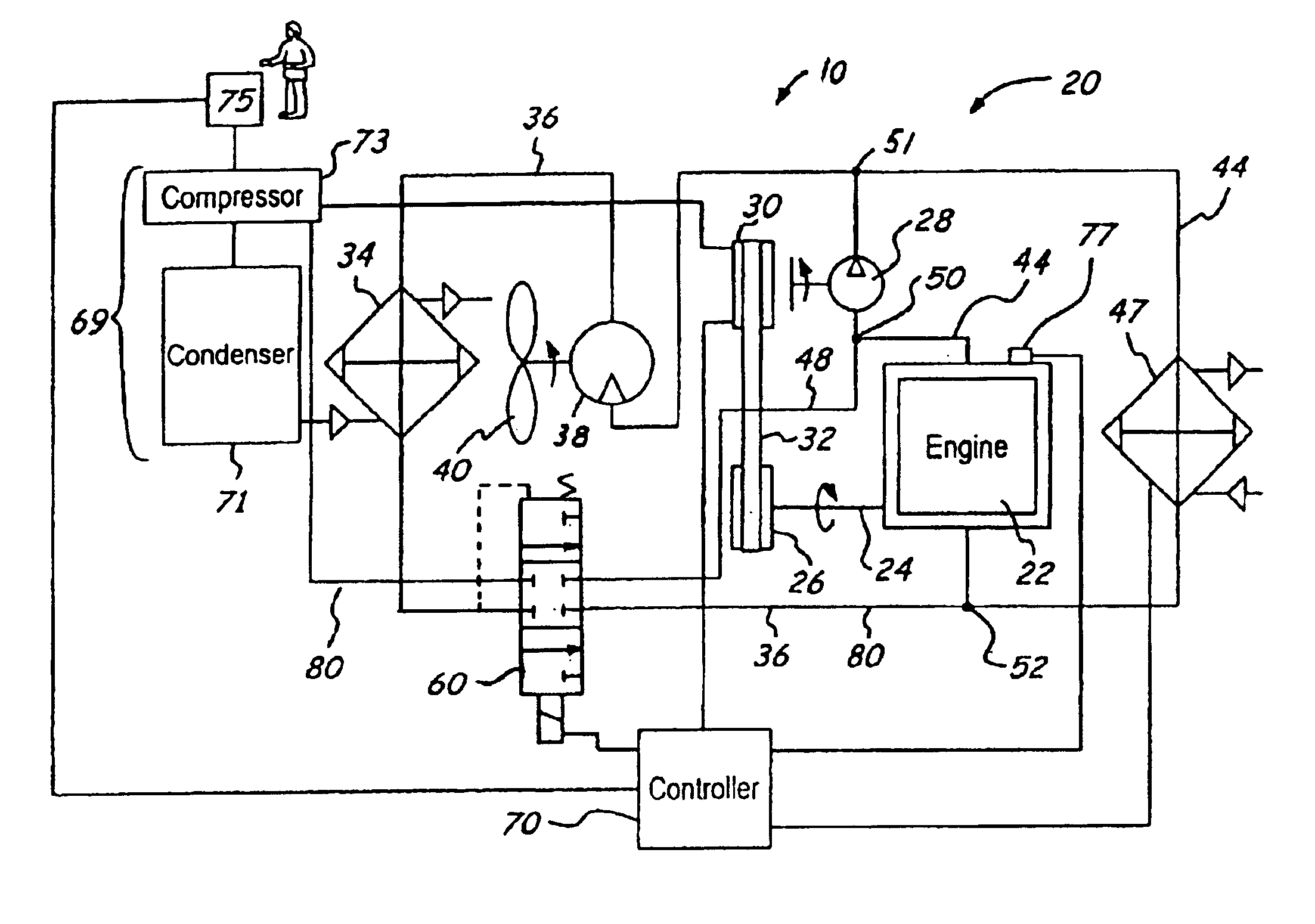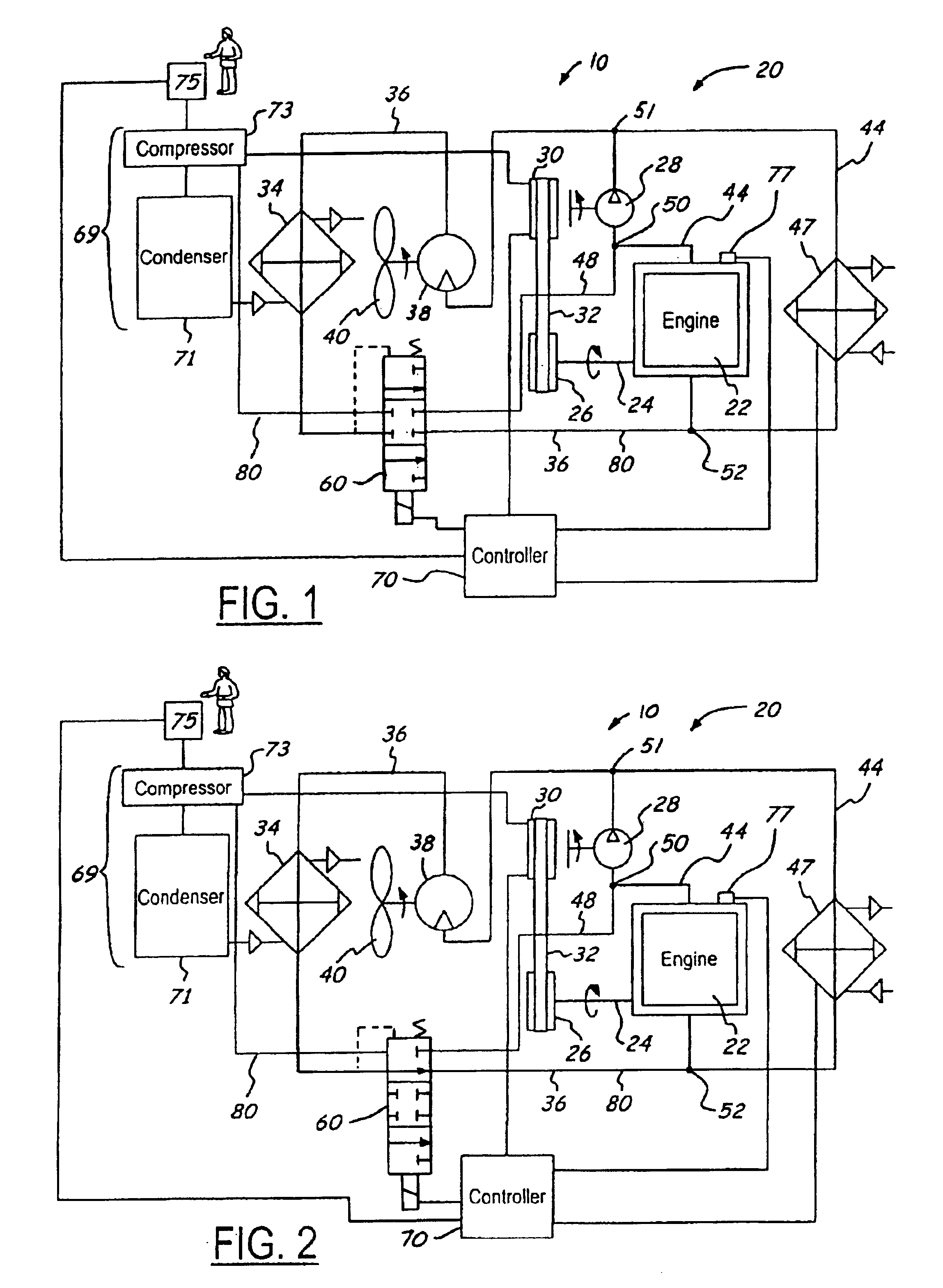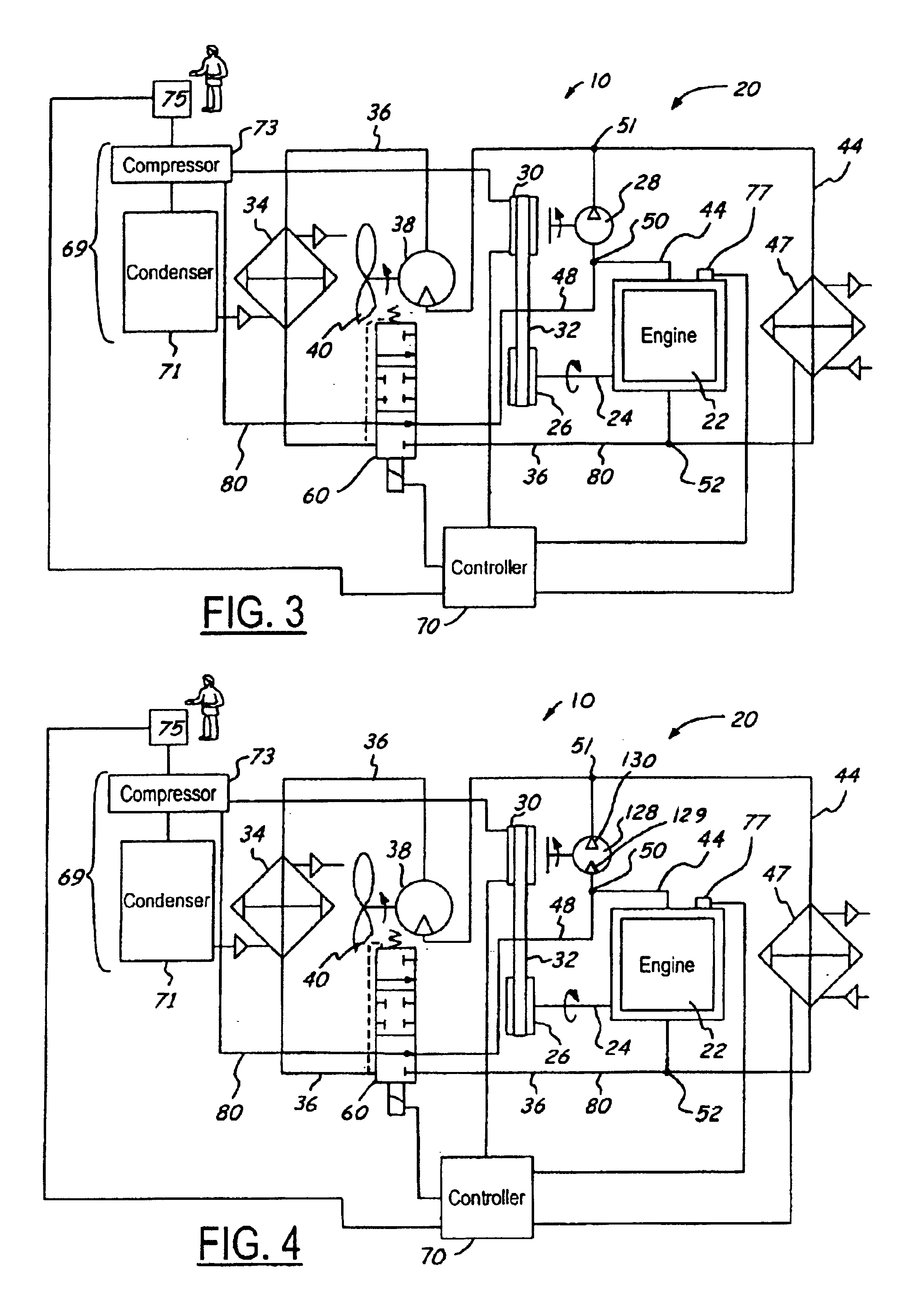Coolant motor fan drive
a technology of cooling motors and motor drives, which is applied in the direction of machines/engines, mechanical equipment, transportation and packaging, etc., can solve the problems of system cost and inefficiency, many engine-cooling applications do not allow for conventional mounting of engines, and poor cooling system performan
- Summary
- Abstract
- Description
- Claims
- Application Information
AI Technical Summary
Benefits of technology
Problems solved by technology
Method used
Image
Examples
Embodiment Construction
Referring now to FIGS. 1-3, a perspective view of a cooling system used to cool an engine 22 of a vehicle 10 in one preferred embodiment is generally designated as 20. The engine 22 has a crankshaft 24 coupled to a crankshaft pulley 26. The crankshaft pulley 26 is rotatably coupled to a water pump 28 via a pump control coupling 30, which is coupled to the crankshaft pulley 26 via a belt 32. The cooling system 20 also has a heater element 47 used to increase the temperature of the engine 22 as desired and to provide heated air to the passenger cabin of the vehicle as desired by a vehicle user75. The cooling system 20 also has an air-conditioning unit 69 providing cooling airflow to the passenger cabin as requested by the user 75.
The location of the user 75 relative to the heater element 47 and air conditioner 69, as shown in FIGS. 1-6 of the present invention, is merely for illustrative purpose only, and is not representative of their actual positioning within the vehicle 10.
The cool...
PUM
 Login to View More
Login to View More Abstract
Description
Claims
Application Information
 Login to View More
Login to View More - R&D
- Intellectual Property
- Life Sciences
- Materials
- Tech Scout
- Unparalleled Data Quality
- Higher Quality Content
- 60% Fewer Hallucinations
Browse by: Latest US Patents, China's latest patents, Technical Efficacy Thesaurus, Application Domain, Technology Topic, Popular Technical Reports.
© 2025 PatSnap. All rights reserved.Legal|Privacy policy|Modern Slavery Act Transparency Statement|Sitemap|About US| Contact US: help@patsnap.com



